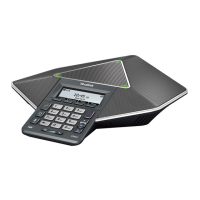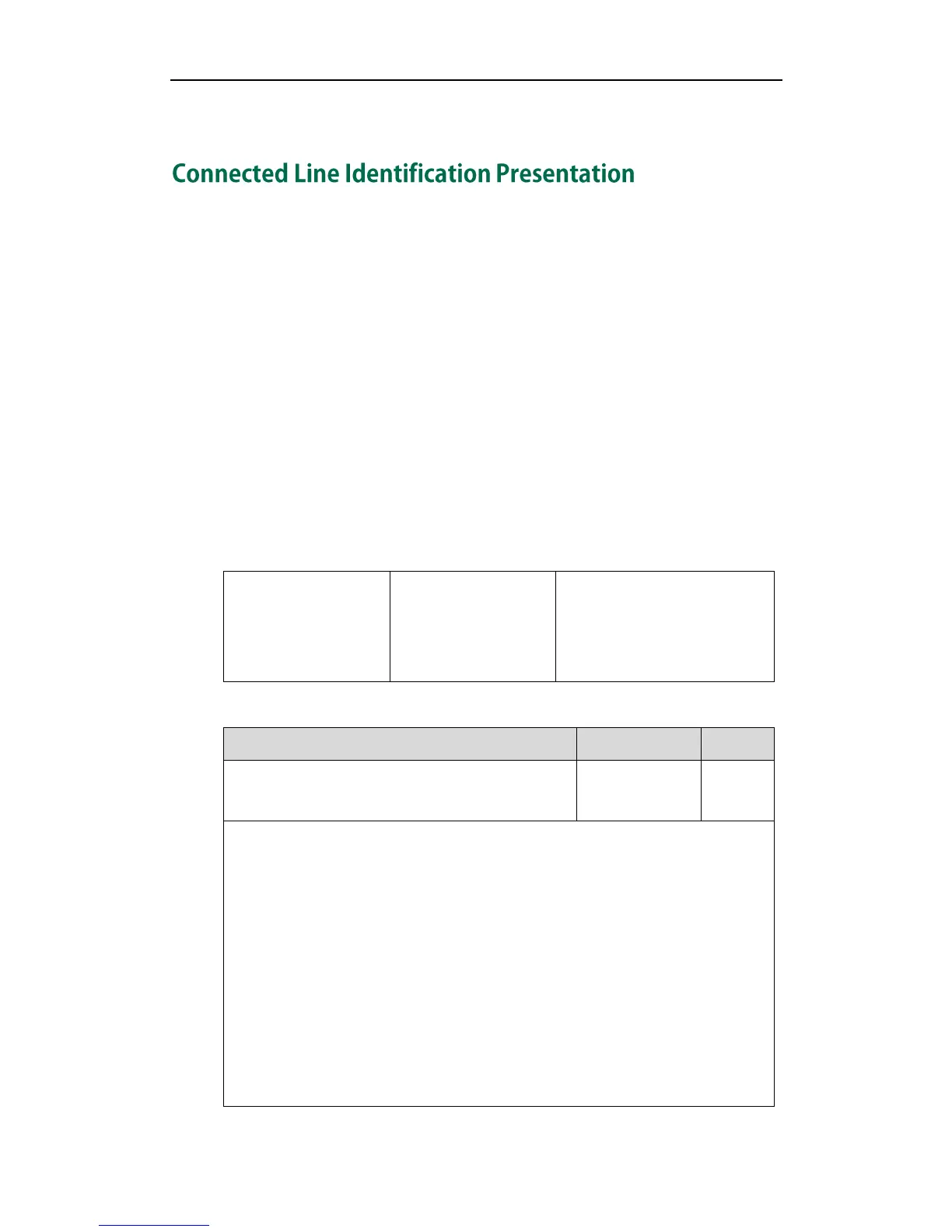Administrator’s Guide for CP860 IP conference phones
164
3. Click Confirm to accept the change.
Connected line identification presentation (COLP) allows IP phones to display the
identity of the connected party specified for outgoing calls. IP phones can display the
Dialed Digits, or the identity in a SIP header (Remote-Party-ID or P-Asserted-Identity)
received, or the identity in the From header carried in the UPDATE message sent by the
callee as described in RFC 4916. Connected line identification presentation is also
known as Called line identification presentation. In some cases, the remote party will be
different from the called line identification presentation due to call diversion.
If the callee has existed in the local directory, the local contact name assigned to the
callee should be preferentially displayed.
For more information on connected line identification presentation, refer to
Calling and
Connected Line Identification Presentation on Yealink IP Phones
, available online:
http://www.yealink.com/DocumentDownload.aspx?CateId=142&flag=142.
Procedure
COLP can be configured only using the configuration files.
Description:
Configures the presentation of the callee’s identity.
0-PAI-RPID (Derives the name and number of the callee from the “PAI” header
preferentially. If the server does not send the “PAI” header, derives from the “RPID”
header).
1-Dialed Digits (Preferentially displays the dialed digits on the caller’s phone).
2-RFC 4916 (Derives the name and number of the callee from “From” header in the
Update message).
When the RFC 4916 is enabled on the IP phone, the caller sends the SIP request
message which contains the from-change tag in the Supported header. The caller
then receives an UPDATE message from the callee, and displays the identity in the

